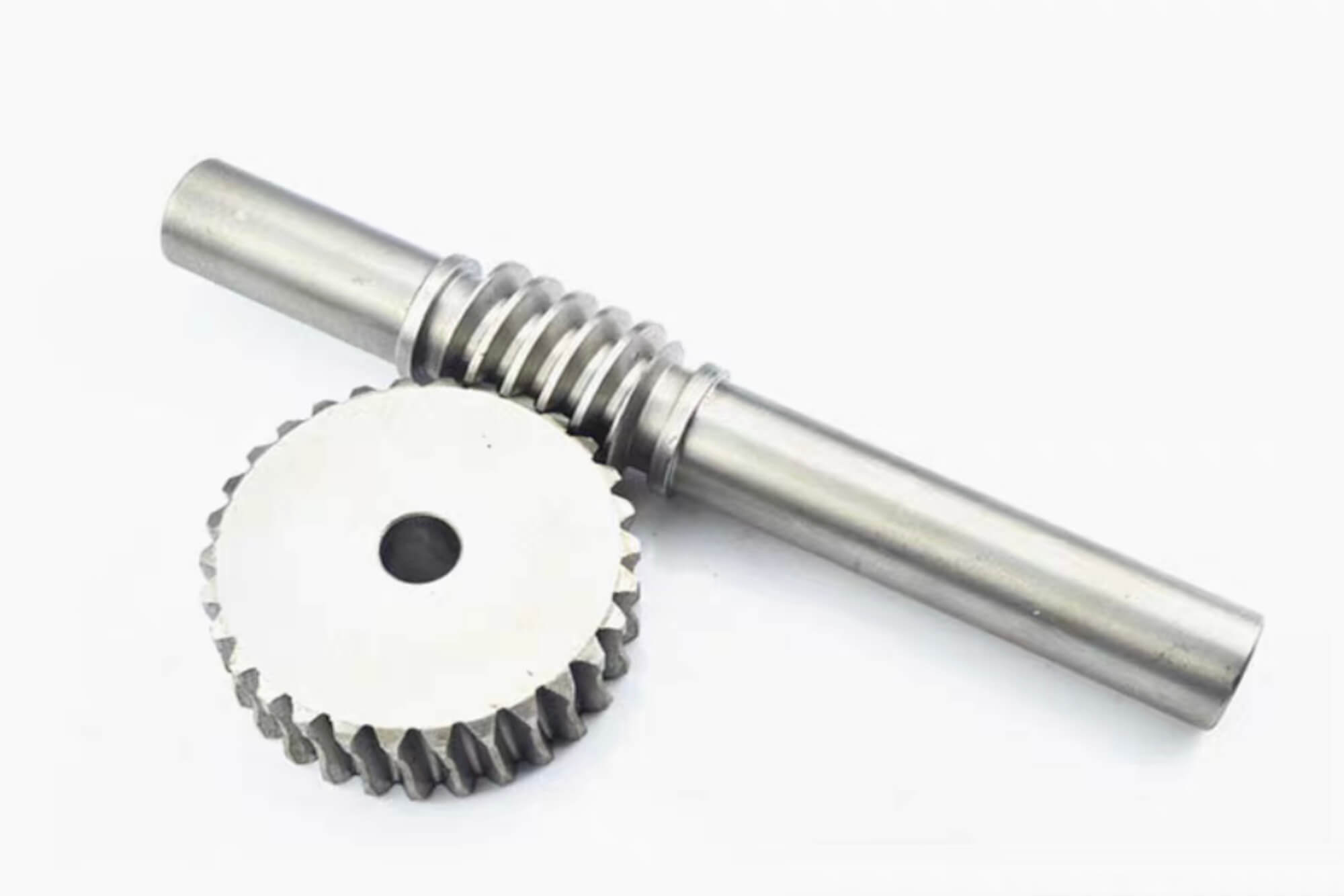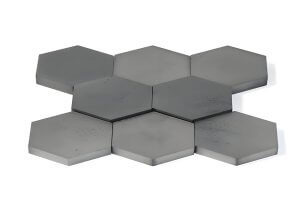Introduction to Worm Gears and CNC
Worm gears are a fascinating and essential component of many modern machines. They might look simple at first glance—a helical gear engaging with a threaded worm shaft—but their functionality is anything but basic. These gears are prized for their ability to achieve high reduction ratios in a single stage, making them a go-to solution for compact, efficient power transmission.
When I first encountered worm gears in my engineering projects, I was struck by their versatility. Whether it’s for automotive systems, precision instruments, or heavy-duty machinery, worm gears seem to find a place. What makes them even more remarkable is how custom machining can adapt their designs to meet specific requirements.But what really elevates their potential is CNC machining. Using computer numerical control (CNC) technology to manufacture worm gears allows us to achieve unparalleled precision, consistency, and customization.
In this article, I’ll share insights from my experiences working with worm gears and explore how CNC machining can take their design and production to the next level. Whether you’re an engineer, a procurement professional, or simply curious about manufacturing, this guide will provide everything you need to know about custom worm gears and the expertise CNC machining brings to the table.And if you want to learn more about gears, read this article: “Everything About Types of Gears: Straight, Helical, Bevel, and More“
Applications of Worm Gears Across Industries
Worm gears are more than just mechanical components; they’re critical problem-solvers in industries where space constraints, noise reduction, and precision are priorities. From my time working on various projects, I’ve seen worm gears excel in several applications:
2.1 Automotive Industry
Worm gears are indispensable in automotive systems, particularly in steering mechanisms and braking systems. Their ability to achieve self-locking functionality ensures that steering remains stable and braking systems remain secure under load. For example, a project I worked on involved optimizing a steering assembly for a compact vehicle. We chose worm gears for their high reduction ratio and compact form factor, which perfectly suited the design constraints.
2.2 Aerospace Applications
In aerospace, every gram of weight and every millimeter of space matters. Worm gears, thanks to their compact size and efficiency, play a vital role in actuation systems and control mechanisms. During one aerospace project, we used custom CNC-machined worm gears in an aircraft wing actuator, ensuring smooth operation under extreme conditions.
2.3 Heavy Machinery
Heavy machinery relies on robust and reliable components, and worm gears are no exception. Their ability to handle high torque loads makes them ideal for conveyors and heavy lifting equipment. In one memorable project for a mining company, we manufactured custom worm gears that could withstand intense wear and tear while ensuring precise load control.
2.4 Robotics and Precision Instruments
Robotics demands accuracy and repeatability, and worm gears deliver on both fronts. In medical robotics, for example, CNC-machined worm gears are used in surgical equipment to provide precise and smooth motion control. I once collaborated on a robotic arm design where worm gears were chosen for their low noise and high positioning accuracy.
2.5 Agricultural Equipment
In agriculture, durability is key. Worm gears used in tractors and harvesters must endure harsh environments and heavy-duty use. CNC machining allows these gears to meet these challenges by ensuring tight tolerances and robust designs.
Why Choose CNC Machining for Worm Gears?
As someone who has worked extensively with CNC machining, I can confidently say it’s a game-changer for worm gear production. The ability to produce CNC machined parts with exceptional precision and reliability makes it indispensable in achieving high-quality worm gears.Here’s why:
3.1 Precision and Accuracy
CNC machining excels at producing components with tight tolerances. For worm gears, where even minor deviations can affect performance, CNC ensures every gear is consistent and precise. For example, in a project for an automotive steering system, we used CNC machining to achieve a tooth profile accuracy of ±0.01mm, resulting in seamless operation.
3.2 Customization
CNC machining offers unparalleled flexibility in creating custom worm gears. Whether it’s adjusting the gear ratio, modifying the tooth profile, or selecting specific materials, CNC machines can handle it all. I’ve worked on projects where each gear required unique specifications, and CNC made it possible to deliver without compromising quality.
3.3 Material Versatility
Worm gears are manufactured from materials ranging from bronze to stainless steel. CNC machines can efficiently process all these materials, tailoring the gear properties to the application. For instance, in a marine project, we used CNC-machined phosphor bronze worm gears for their corrosion resistance.
3.4 Efficiency and Cost-Effectiveness
While the upfront cost of CNC machining might seem high, the long-term benefits outweigh it. Faster production cycles, reduced waste, and lower defect rates make CNC machining a cost-effective solution for worm gear manufacturing.
3.5 Surface Finishes
CNC machining allows for advanced surface treatments, ensuring smooth gear operation and reduced wear. In one robotics project, we applied a mirror-like finish to the worm gear teeth to minimize friction, enhancing the overall efficiency of the system.
Key Design Considerations for Worm Gears
Designing worm gears requires balancing multiple factors, and CNC machining plays a crucial role in meeting these requirements. Here are some essential considerations:
| Design Factor | Impact | CNC Contribution |
|---|---|---|
| Gear Ratio | Determines speed reduction and torque output | CNC ensures precise tooth profiles for exact ratios |
| Tooth Profile | Affects smoothness and efficiency | High-resolution machining for perfect profiles |
| Material Selection | Influences durability and performance | Supports a wide range of materials with precision cutting |
| Lubrication System | Critical for reducing friction and wear | CNC enables integration of oil grooves or channels |
| Backlash Minimization | Essential for high-precision applications | Tight tolerances achievable through CNC |
| Load Capacity | Determines the gear’s ability to handle stress | CNC allows for reinforced designs with optimized material usage |
Each factor directly influences the performance of worm gears, and CNC machining ensures these factors are achieved to the highest standards.
CNC Machining Process for Worm Gears
The CNC machining process for worm gears involves several stages, each critical to the final product’s performance. Here’s a step-by-step breakdown based on my experience:
- Design Phase
- Using CAD software, the gear design is finalized with precise dimensions and tolerances.
- Programming
- CAM software translates the CAD design into machine-readable instructions.
- Material Preparation
- The chosen material, such as bronze or steel, is prepared and mounted on the CNC machine.
- Machining
- Heat Treatment
- Enhances the material’s hardness and wear resistance.
- Finishing
- Surface treatments, such as polishing or coating, are applied to improve performance.
- Inspection
- The final product undergoes rigorous quality checks, including dimensional and performance testing.
Common Challenges in Worm Gear Manufacturing and CNC Solutions
6.1 Material Deformation
Challenge: High stress during machining can deform materials.
Solution: CNC machines with optimized cutting parameters reduce deformation.
6.2 Precision in Tooth Profiles
Challenge: Inaccurate profiles lead to inefficiency.
Solution: Advanced CNC tools ensure perfect profile generation.
6.3 Backlash
Challenge: Excessive backlash impacts performance.
Solution: CNC ensures tight tolerances, reducing backlash to a minimum.
Case Studies: Successful Applications of CNC in Worm Gear Manufacturing
One of the best ways to understand the value of CNC machining in worm gear manufacturing is by examining real-world examples. Over the years, I’ve worked on several projects that highlight how CNC has transformed the production process, improved quality, and met diverse industry requirements. Let me walk you through some key cases.
Case Study 1: Automotive Steering System
Challenge:
A client in the automotive sector needed worm gears for a steering mechanism. These gears required a high reduction ratio and had to be self-locking to enhance safety. Precision was critical because even a small deviation in the tooth profile could lead to steering instability.
Solution:
We used CNC machining to produce worm gears with tight tolerances of ±0.01mm. The CNC process allowed us to:
- Precisely cut the gear teeth to the exact specifications.
- Apply a mirror-like finish to reduce friction and enhance efficiency.
- Use high-strength alloy steel to ensure durability.
Result:
The CNC-machined worm gears delivered exceptional performance, meeting both safety and efficiency requirements. The client reported improved steering responsiveness and reduced production costs due to minimal waste during manufacturing.
Case Study 2: Aerospace Actuator System
Challenge:
An aerospace company needed lightweight yet robust worm gears for an actuator system used in aircraft wings. The gears had to operate flawlessly under extreme conditions, including high temperatures and vibrations.
Solution:
We selected titanium for its strength-to-weight ratio and corrosion resistance. CNC machining enabled us to:
- Create complex geometries with minimal material waste.
- Integrate lubrication channels directly into the gear design.
- Perform surface treatments to enhance wear resistance.
Result:
The CNC-machined worm gears exceeded performance benchmarks, ensuring reliability during rigorous testing. The project demonstrated how CNC machining could address the unique demands of aerospace applications.
Case Study 3: Industrial Conveyor System
Challenge:
A mining company required heavy-duty worm gears for a conveyor system. These gears had to handle high torque loads and operate continuously in dusty, abrasive environments.
Solution:
We used CNC machining to:
- Manufacture worm gears from heat-treated steel for maximum strength.
- Achieve precise alignment between the worm and gear teeth to minimize wear.
- Add a durable coating to protect against corrosion and abrasives.
Result:
The custom CNC-machined worm gears significantly extended the lifespan of the conveyor system, reducing maintenance costs and downtime.
Future Trends in Worm Gear and CNC Technology
As technology evolves, so do the capabilities of worm gears and CNC machining. Here are some key trends shaping the future:
8.1 Advanced Materials
- Composites: Lightweight composite materials are increasingly being used for worm gears, especially in aerospace and robotics.
- High-Performance Alloys: Materials like Inconel and titanium are gaining popularity for their strength and resistance to extreme conditions.
8.2 AI and Automation in CNC
Artificial intelligence is transforming CNC machining by:
- Optimizing cutting paths to reduce production time.
- Predicting wear on tools to minimize downtime.
- Enhancing quality control through automated inspections.
8.3 3D Printing Integration
Additive manufacturing is making it easier to produce prototypes of worm gears. While CNC remains the gold standard for production, 3D printing is proving valuable for testing designs before committing to full-scale manufacturing.
8.4 Sustainability
With growing emphasis on eco-friendly practices, CNC machining is adopting:
- Energy-efficient machines that reduce power consumption.
- Recycling systems to repurpose waste material.
- Sustainable materials to minimize environmental impact.
Conclusion
Worm gears are indispensable in modern machinery, and CNC machining elevates their potential by delivering unmatched precision, customization, and quality. From automotive systems to aerospace applications, the ability to produce highly specialized worm gears has revolutionized industries worldwide.
If you’re considering worm gears for your project, I recommend exploring CNC machining as your manufacturing solution. With its ability to meet complex requirements and deliver consistent results, CNC ensures that your worm gears perform at their best. Whether you need a single prototype or mass production, the expertise and technology available today can help you achieve your goals.
FAQ
- What are worm gears, and how do they work?
Worm gears are a type of gear system where a helical worm shaft engages with a gear wheel. This setup allows for high reduction ratios and self-locking capabilities, making them ideal for compact and precise applications. - Why is CNC machining ideal for worm gears?
CNC machining ensures tight tolerances, consistent quality, and the ability to produce complex designs with high precision, making it the best choice for manufacturing worm gears. - What materials are commonly used for worm gears?
Materials like bronze, stainless steel, alloy steel, and titanium are popular choices, depending on the application and environmental conditions. - How does CNC improve worm gear performance?
CNC machining allows for precise tooth profiles, smooth finishes, and customizable designs, all of which enhance the efficiency and durability of worm gears. - Can CNC machining handle custom worm gear designs?
Yes, CNC machining excels at producing custom worm gears tailored to specific requirements, including unique sizes, tooth profiles, and materials. - What industries use worm gears the most?
Industries like automotive, aerospace, robotics, heavy machinery, and agriculture heavily rely on worm gears for their efficiency and reliability. - How can I minimize backlash in worm gears?
Using CNC machining to achieve tight tolerances and incorporating anti-backlash mechanisms are effective ways to minimize backlash. - What surface treatments are recommended for worm gears?
Common treatments include polishing, coating (e.g., nickel or chrome), and heat treatments to improve wear resistance and reduce friction. - How do worm gears compare to other gear types?
Worm gears offer compact design, high reduction ratios, and self-locking capabilities, setting them apart from spur or helical gears. - What are the typical load capacities of worm gears?
Load capacity varies based on material and design but can be enhanced through CNC machining and proper heat treatment. - Are worm gears suitable for high-speed applications?
Worm gears are better suited for low-speed, high-torque applications. For high-speed uses, other gear types may be more appropriate. - Can CNC machining reduce production costs?
Yes, CNC reduces waste, improves efficiency, and ensures consistent quality, which lowers long-term production costs. - What are the limitations of worm gears?
Worm gears can have lower efficiency due to friction, but this can be mitigated with proper lubrication and CNC-optimized designs. - How long does it take to produce custom worm gears with CNC?
Production time depends on complexity, but CNC machines can significantly reduce lead times compared to traditional methods. - What’s the future of worm gears in modern industries?
With advancements in materials and CNC technology, worm gears are becoming more durable, efficient, and versatile for diverse applications.
Other Articles You Might Enjoy
- Everything About Types of Gears: Straight, Helical, Bevel, and More
Introduction When I first started learning about types of gears, I thought they all looked alike: just round devices with teeth that mesh together. But as I dug deeper, I…
- Master CNC Machining for Planetary Gear: Design, Tools, and Applications
What Is a Planetary Gear and Why Is It Important? When discussing advanced mechanical systems, few designs are as efficient and versatile as the planetary gear. Known for its compact structure…
- How to Procure and Machine Custom Helical Gear: A Step-by-Step Guide for Manufacturers
Introduction Custom helical gear is integral components in machinery where precision, performance, and durability are non-negotiable. From personal experience, I’ve found that whether you're designing a state-of-the-art automotive transmission, an…
- Straight Cut Gears Explained: What They Are and Why They Matter in CNC Machining
Introduction If you’ve worked with high-performance machinery or explored CNC machining, you’ve likely come across the term straight cut gears. These gears are renowned for their efficiency in transferring power…
- Spur Gear Machining: A Complete Guide to Design and Manufacturing
Introduction: The Role of Spur Gears in Modern Industry I’ve worked with mechanical systems for several years, and along the way, I’ve realized how crucial a spur gear can be.…
- Exploring Bevel Gear Machining: Design, Precision, and Innovation
Introduction I remember the first time I noticed a bevel gear in action. It was part of a complex gear train inside a small industrial machine I was helping to…
- Precision CNC Machining for High-Performance Industrial Machinery
Precision CNC Machining for High-Performance Industrial Machinery The process of Precision CNC (Computer Numerical Control) machining is at the core of manufacturing high-performance industrial machinery. This technique leverages a computer's…
- Precision CNC Machining of Steel: High-Volume Production
Precision CNC Machining and High-Volume Production As an integral part of modern manufacturing processes, Precision Computer Numerical Control (CNC) machining brings about unmatched accuracy and consistency in the production of…
- Custom CNC Machining Solutions for Aerospace Instrumentation
Introduction to CNC Machining in Aerospace Instrumentation In the modern era, Custom Numerical Control (CNC) machining has emerged as a pivotal capability in the aerospace industry. Pioneering advancements in technology…






